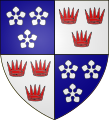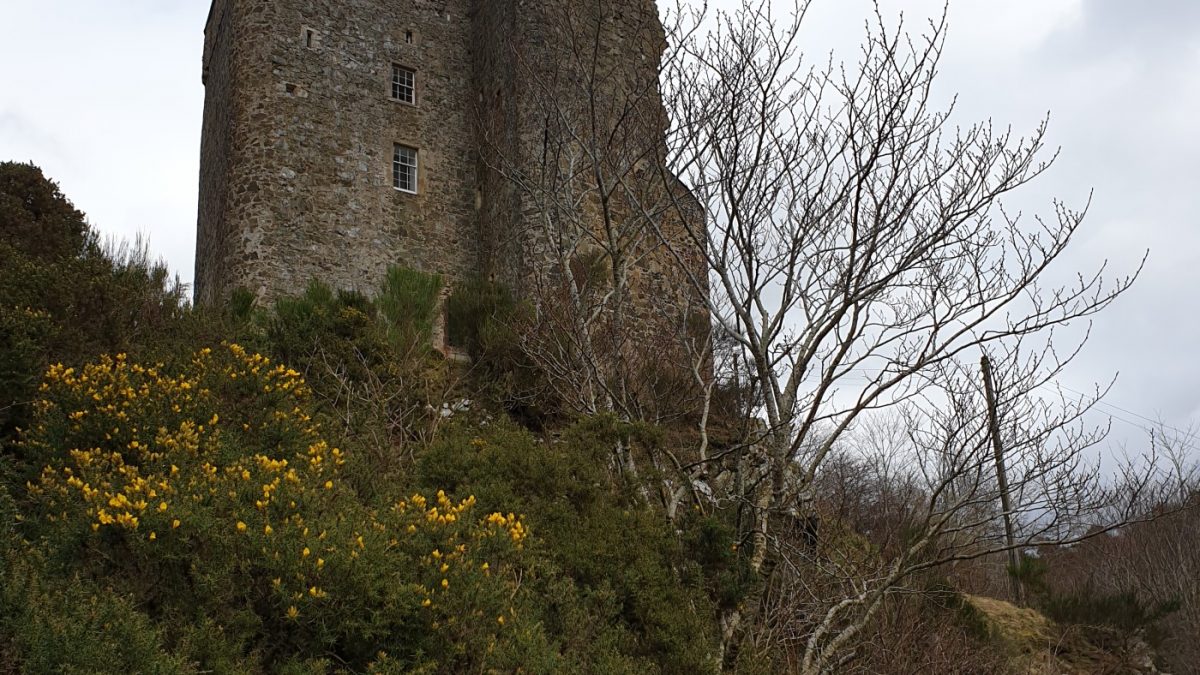The dry weather is holding so we had another great walk today from the house. From Haylodge Park we continued west, heading away from Peebles. The footpath follows the banks of the River Tweed and after a mile or so you come to Neidpath Castle, a 14th century tower house which today is not generally open to the public, other than for events such as weddings. However, we can arrange a private tour which might be of interest – especially if you have Fraser, Hay or Douglas roots!
The first castle on this site was founded by Sir Gilbert Fraser in 1190, and was passed down through the family to Sir Simon Fraser, a hero of the Scottish Wars of Independence. These wars began in the late 13th century and were to last almost 50 years, during which time Scotland battled to gain recognition as a state which was independent of English control. Fraser led a Scottish force of around 8000 men to victory over an English army three times as large at the Battle of Rosslyn in 1301. This astonishing victory was to earn Fraser the nickname “The Patriot”. It is said Fraser saved the life of King Robert the Bruce three times and was thereafter given the right to display three crowns on the Fraser coat of arms. However, in 1306 the Patriot’s luck finally ran out. He was captured by the English and taken to London where he was condemned as a traitor. Like William Wallace the year before, Fraser was hanged and cut down whilst still alive, then disembowelled and finally beheaded. His limbs were cut off and his head stuck on a spike on London Bridge, beside Wallace’s. Neidpath was burnt to the ground by the English, and Fraser’s daughter Mary inherited a smouldering ruin.

Mary went on to marry, and with that marriage the castle passed to the Hay family. It is thought that the present castle was built by Sir William Hay in the late 14th century. In later years the castle changed hands again, and by the late 17th century, Neidpath is in the possession of Sir William Douglas. Douglas had three daughters, the youngest of whom was named Jean. Jean fell in love with the son of the Laird of Tushielaw, and although the family had property, the laird’s son was not considered to be of high enough birth to be a suitable match for Jean. Sir William refused to sanction the marriage, and sent the young man away, hoping that Jean would forget all about him. But poor Jean was devastated. She spent months watching from the castle ramparts, praying for the return of her lover. She became ill and her health deteriorated. Eventually one day he did return, but so weak and emaciated was Jean that he did not recognise her and rode past the castle without acknowledging her. This was too much for Jean to take, and she died of a broken heart. Jean is said to haunt the castle to this day. The ghostly figure of a woman wearing a long brown dress with a large white collar has been sighted walking the castle ramparts, still waiting for her lover to return to her. Sir Walter Scott, writing in the 19th century, immortalises Jean in his ballad, The Maid of Neidpath.
The Maid of Neidpath by Sir Walter Scott
O lovers’ eyes are sharp to see,
And lovers’ ears in hearing
And love, in life’s extremity
Can lend an hour of cheering.
Disease had been in Mary’s bower
And slow decay from mourning,
Though now she sits on Neidpath’s tower
To watch her Love’s returning.
All sunk and dim her eyes so bright,
Her form decay’d by pining,
Till through her wasted hand, at night,
You saw the taper shining.
By fits a sultry hectic hue
Across her cheek was flying;
By fits so ashy pale she grew
Her maidens thought her dying.
Yet keenest powers to see and hear
Seem’d in her frame residing;
Before the watch-dog prick’d his ear
She heard her lover’s riding;
Ere scarce a distant form was kenn’d
She knew and waved to greet him,
And o’er the battlement did bend
As on the wing to meet him.
He came–he pass’d–an heedless gaze
As o’er some stranger glancing;
Her welcome, spoke in faltering phrase,
Lost in his courser’s prancing
The castle-arch, whose hollow tone
Returns each whisper spoken,
Could scarcely catch the feeble moan
Which told her heart was broken

Related posts
Whoops! No connected account found. Try connecting an account first.


